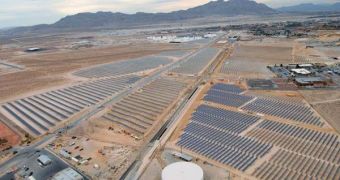Out of all the renewable sources of energy that could be tapped to create electricity, solar radiation is now, by far, the most favored. Although some may argue that geothermal energy is truly endless, the fact is that billions of dollars are currently being poured into research related to creating more efficient and better solar cells or solar thermal installations. The technology that allows for harvesting photons and turning them into electricity has evolved considerably over the last decade, but using it on a large scale is still prohibitively expensive, Technology Review informs.
The European Commission has recently released a new study, showing that, if all roofs facing South within the Union would be outfitted with solar cells, then the entire power demands of the continent would be easily met. However, such an objective is still a few decades away. At this point, it is still about five times cheaper to burn natural gas, oil products and coal than to install a solar panel, despite the fact that cells are becoming less expensive every year. Until they can compete with fossil fuels one-on-one, there is no real hope of it being implemented.
Between 1992 and 2005, the US National Renewable Energy Laboratory estimates, the costs associated with producing solar panels have decreased constantly by about 5.5 percent per year, and this trend is expected to continue, as new, revolutionary technologies are discovered and implemented. However, such a decrease is insufficient. According to the same European Commission report, even if the trend continues unaltered, by 2030 only four percent of power demands will be met through solar energy. While this would certainly be an increase from the one-percent proportion it holds today, it would also have little effect on reducing greenhouse gas (GHG) emissions at a global scale.
California Institute of Technology (Caltech) expert and chemist Nate Lewis says that, if 1.7 percent of the total land surface in the United States were to be covered with solar panels operating at a ten-percent efficiency, then the structure would produce about three terawatts of electricity, enough to meet all of the country's power demands. According to estimates, the Sun bombards the Earth with enough energy during an hour to last humankind for more than a year, which makes solar power the obvious short-term choice for renewable energy.

 14 DAY TRIAL //
14 DAY TRIAL //